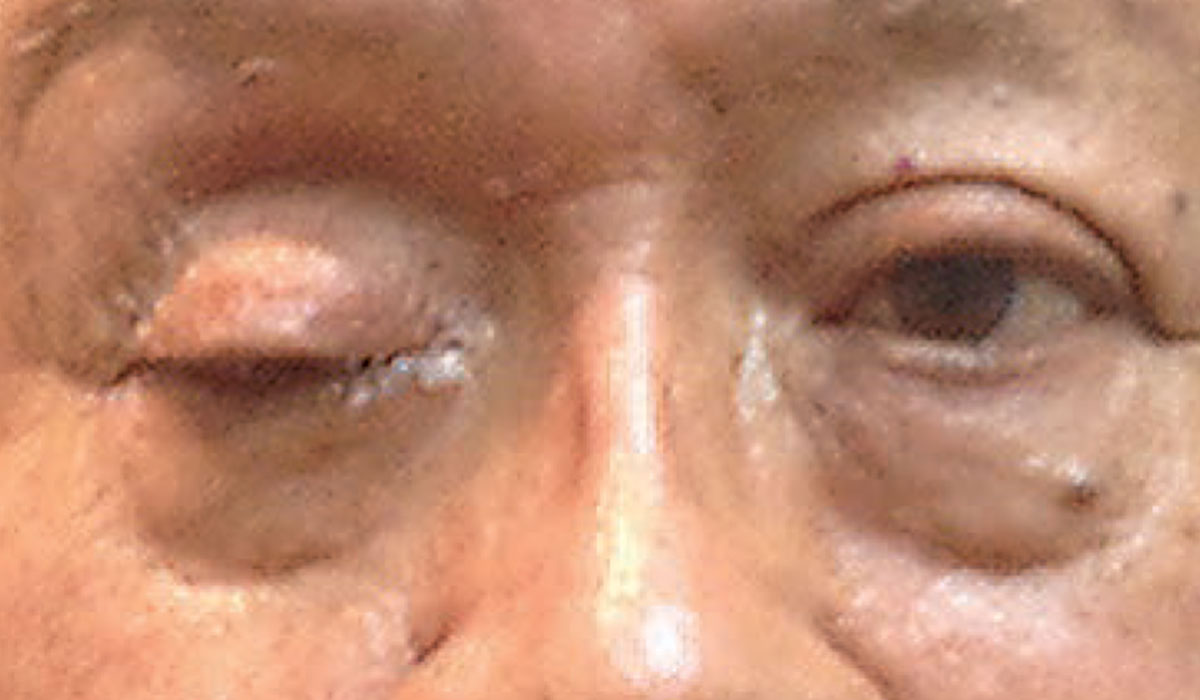 |
| Evaluate ptosis patient’s eyelid positioning prior to surgery for the best refractive results. Photo: Michael Trottini, OD. |
Acquired ptosis is a common condition that affects not only the individual’s appearance but also their vision, often by obscuring the upward gaze. Its effects on vision may extend to the cornea as well, according to a recent study. The researchers noted that previous studies on eyelid positioning in conditions like chalazion and hemangiomas showed that increased pressure on the cornea may cause refractive changes.
The researchers evaluated astigmatism characteristics and surgically-induced astigmatism (SIA) in patients with age-related ptosis (AP) and contact lens-related ptosis (CLP) before and after blepharoptosis surgery. They found that repositioning the upper eyelid affects visual function due to short-term astigmatic changes.
The study included 188 eyes of 58 consecutive patients (AP group: 85 eyes of 45 patients, CLP group: 23 eyes of 13 patients) who underwent blepharoptosis in 2019. Astigmatism was assessed with computerized corneal topography. The team noted that the AP group was slightly older than the CLP group (mean age: 73.8 years vs. 47.7 years, respectively). They reported that margin reflex distance (MRD) increased significantly after treatment in both groups.
With-the-rule (WTR), against-the-rule and oblique astigmatism were as follows: 52%, 22% and 25% in the AP group and 86%, 9% and 4% in the CLP group, respectively. The researchers also noticed a shift in astigmatism type in 41% and 13% of AP and CLP patients, respectively.
Average SIA measured with the Cravy method was 0.11±1.22D in the AP group and -0.28±1.07D in the CLP group (WTR astigmatism). With the Jaffe method, it was 0.78±0.7D in the AP group and 0.82±0.88D in the CLP group. They didn’t find any significant correlations between SIA using the Cravy or Jaffe methods and MRD.
“Against-the-rule was the most common in AP, and WTR was most common in CLP,” the researchers reported. “Previously, it was assumed that the mechanical pressure from ptosis of the upper eyelid causes the steepest corneal curvature in the vertical meridian, which leads to WTR drift. Gullstrand has reported that flattening of the peripheral cornea by eyelid pressure causes corneal astigmatism in the WTR direction. We’ve also come across several cases in which the topography showed a strong asymmetric corneal astigmatism on the superior corneal hemifield preoperatively.”
They say that age may account for the differences in WTR and oblique astigmatism proportions in the AP and CLP groups. “A previous study…reported that the preoperative proportion of WTR was 70% in the younger ptosis surgery group and 22% in the older blepharoptosis group, which is consistent with our result,” they noted. “This age-related mechanism could significantly affect a large WTR proportion in the young CLP group and ATR proportion in the older AP group pre- and postoperatively.”
The researchers concluded, “It’s important to consider the eyelid position prior to cataract surgery for the best refractive outcome. Further, the cornea was dynamically affected by ptosis both pre- and postoperatively, and the ways in which early postoperative changes and long-term astigmatic changes affect the quality of vision should be taken into consideration.”
Dannoue K, Takagi S, Uemura K, et al. Characteristics of astigmatism before and 1 month after blepharoptosis surgery in patients with acquired ptosis. PLoSOne. October 28, 2021. [Epub ahead of print]. |

